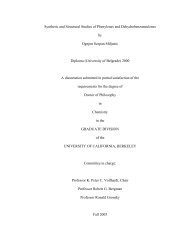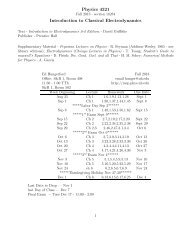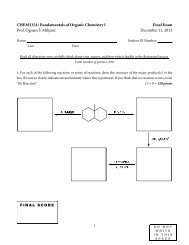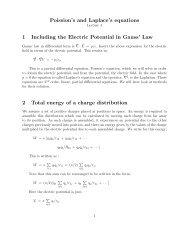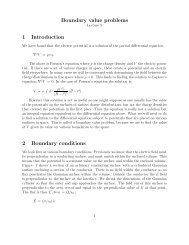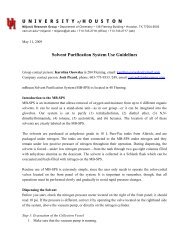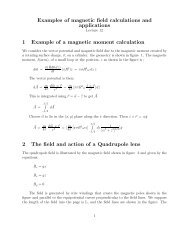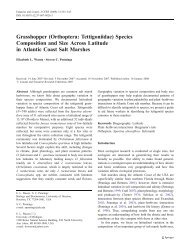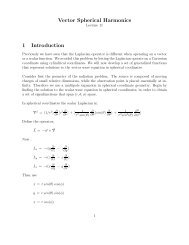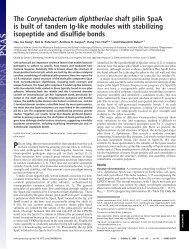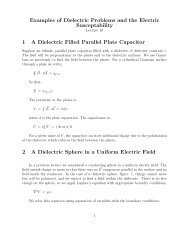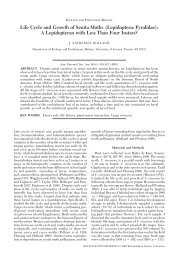Scattering 1 Classical scattering of a charged particle (Rutherford ...
Scattering 1 Classical scattering of a charged particle (Rutherford ...
Scattering 1 Classical scattering of a charged particle (Rutherford ...
You also want an ePaper? Increase the reach of your titles
YUMPU automatically turns print PDFs into web optimized ePapers that Google loves.
IncidentDirectionzθn^ScatteredDirection^η 0xφθη^η^φ 21yFigure 4: The geometry used to evaluate the angles in Thompson <strong>scattering</strong>8 BremsstrahlungThe general form <strong>of</strong> the radiated energy,dWdΩ= ∫ dt dPdΩ ;Thus use ⃗ S = ǫc|E| 2ˆn and ⃗ E =dWdΩ= A ∫ dt |E| 2 R 24πǫ q × ˆn ×⃗˙β[ˆnR] Ret and write;In the above A is a constant depending on the charge. Take the Fourier transform <strong>of</strong> thefield using the time dependence <strong>of</strong> the field, e iωt .E(ω) = 1 √2π∫dt E(t) eiωtE(t) = 1 √2π∫dω E(ω) e−iωtThen substitute to obtain;dWdΩ= (AR 2 /2π) ∫ dt ∫ dω ∫ dω ′ E ∗ (ω ′ ) E(ω) e i(ω−ω′ )tdWdΩ= (AR 2 /2π) ∫ dω |E(ω)| 2Therefore we identify the frequency spectrum <strong>of</strong> the radiation where I is the intensity(power/area) as;d 2 IdωdΩ = 2A|E(ω)|2 R 2Now substitute for the radiation field <strong>of</strong> an accelerated <strong>particle</strong> (use the relativistically correctexpression);11




